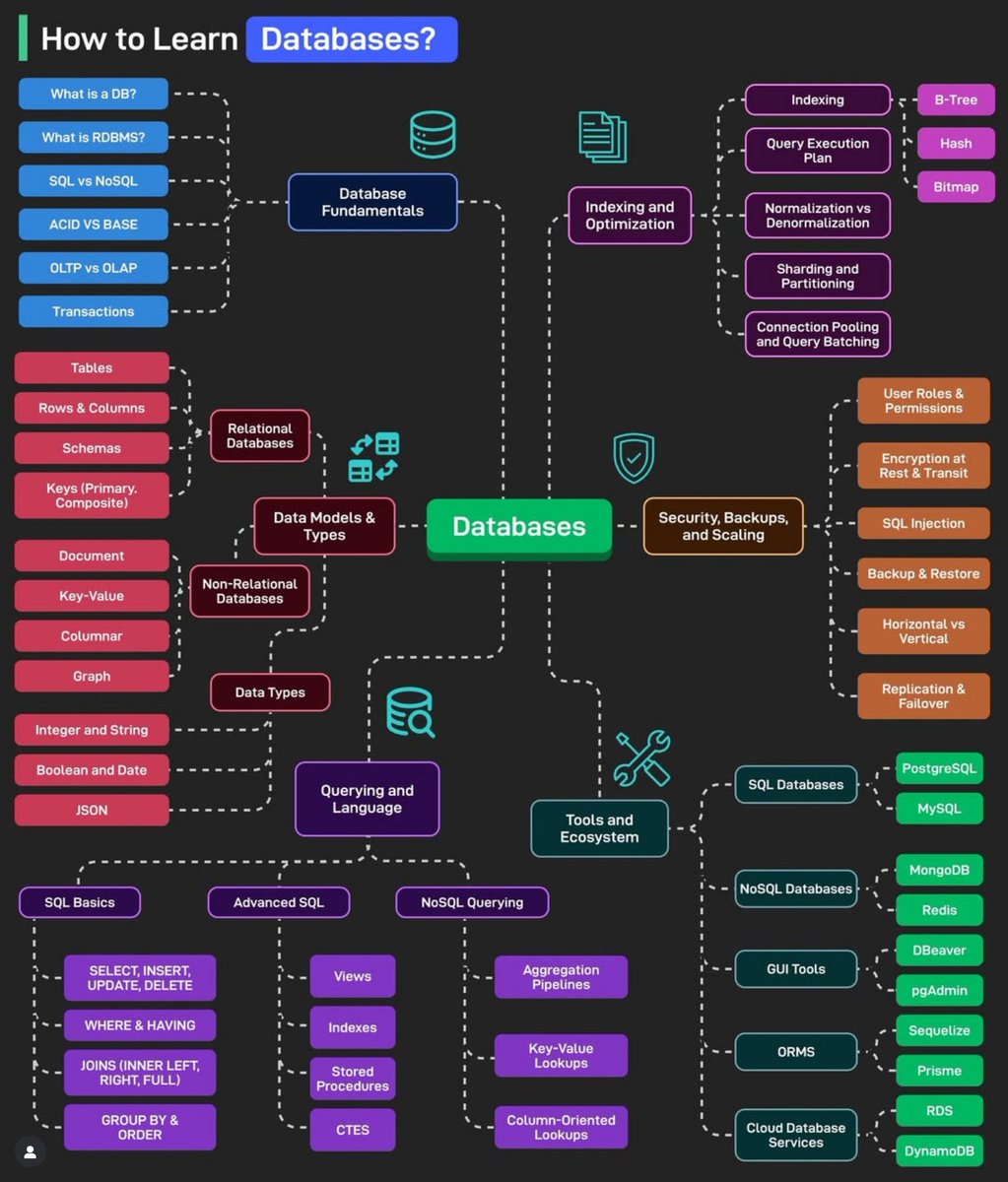Learn Database Databases power everything from websites and apps to enterprise systems. Here’s a learning map that can help you master databases: 1 - Database Fundamentals This includes topics like “What is a database”, RDBMS, SQL vs NoSQL, ACID vs BASE, OLTP vs OLAP, Transactions, and Isolation Levels. 2 - Data Models and Types Consists of topics like Relational Databases, Non-Relational Databases, and Data Types (Integer, String, Boolean, Date, JSON, etc). 3 - Querying and Language This includes topics like SQL Basics (SELECT, INSERT, etc), Advanced SQL (Views, Indexes, CTEs, etc), and NoSQL Querying (Aggregation and Key-Value Lookups). 4 - Indexing and Optimization Consists of topics like Indexing (B-Tree, Hash, and Bitmaps), Query Execution Plans, Denormalization vs Normalization, Sharding, Connecting Pooling, and Query Batching. 5 - Security, Backups, and Scaling This includes topics like User Roles, Permissions, Encryption, SQL Injection, High Availability (Replication and Failover), Horizontal vs Vertical Scaling. 6 - Tools and Ecosystem Consists of topics like Popular SQL Databases, NoSQL Database, GUI Tools, ORMs, Cloud DB services (RDS, DynamoDB, Google Cloud SQL, etc.) Over to you: What else will you add to the list for learning databases?
@Python_Dv Supply chain resilience isnt about predicting disruptions... its about adapting to them faster than your competitors. Agility wins.


